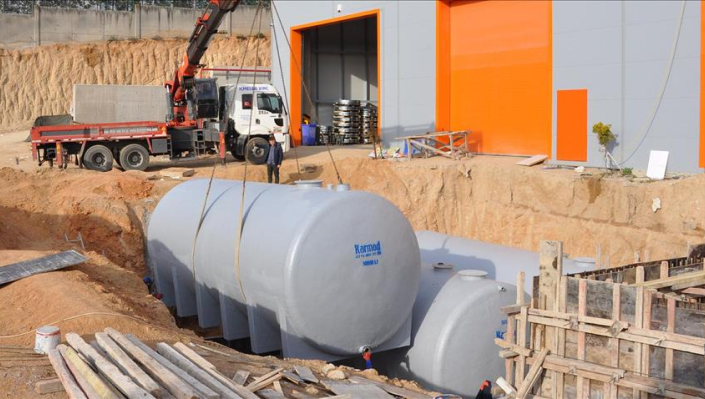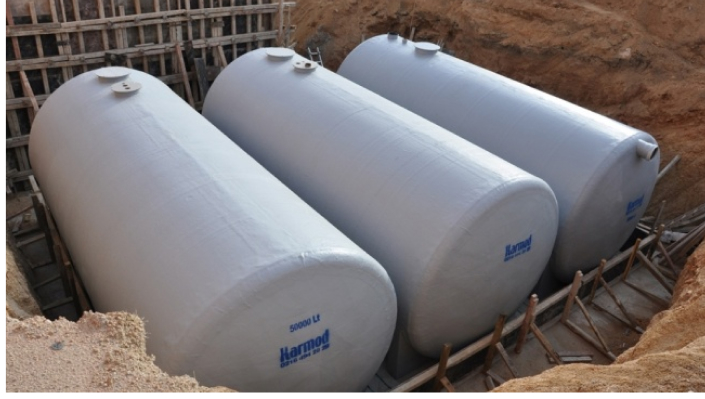Tanks provide advantages to their users in many respects, as well as contributing to our environment and nature. You can harvest rainwater by purchasing a water tank. For the future of our children and our Earth, you can position and use the rainwater harvesting system almost everywhere.
Rainwater harvesting is of great importance for our future, but there is also a positive side of the harvesting system reflected in our water bill. You can place the rainwater harvesting system in your building, even just by buying a water tank. Thus, you can use the water you have stored in areas such as plant irrigation and cleaning.

Basically, the purpose of a tank in rainwater harvesting is to accumulate and protect the water coming from the rain collection area, and we see that they are tools that allow the stored water to be discharged and used if needed.
Rainwater tanks can be used for a very long time. They are usually produced from polyethylene raw materials, but you can install a rainwater harvesting system by purchasing the tank you want. Rainwater harvesting tanks require almost no maintenance, if minor punctures and damages occur, these damages can be repaired. You don't have to worry about damage after the initial purchase, as all tanks have a two-year warranty against manufacturing defects. In order to use your rainwater harvesting tank for a longer life, it will be enough to follow the steps below.
1-) Make sure you position your tank in the right place.
The tank must always be positioned in the right place. This is an important step not only for rainwater harvesting systems, but for all tank uses. However, this step can be a little more limited in rainwater collection systems. Especially in apartment buildings, since it is necessary to position under the roof where rainwater is collected and the pipes through which the water is channeled, the tanks are positioned only in these areas.
The area where the tank is located should be closed if possible. The tank kept in a closed environment will have a longer life as it will be less affected by external environmental conditions. In terms of the safety of the content, it should not be exposed to direct sunlight. Otherwise, the stored water will always be hot in summer and always cold in winter.
2-) Do tank cleaning regularly.
Tank cleaning has always been a skipped step. The tanks used in rainwater collection systems are usually not prioritized because they usually contain only water. But cleaning is now essential for every tank.
Choose a tank suitable for rain volume.
Choosing a tank suitable for a need can be a problem in every sector. In rainwater harvesting systems, the rain falling in the region should be analyzed. Rainfall can vary. If you want to buy a tank for rainwater harvesting, it is recommended that you calculate the maximum rain volume and buy it. In order to store the stored water in a cleaner way, it is recommended to put a filter at the point where the water enters the tank.
Filter operations
In rainwater harvesting systems, filter operations are usually carried out when water is used for drinking purposes. However, the rain collection area of places such as apartments and workplaces is not always clean and it is not possible to be clean. For this reason, a thick filter should be installed on the part of the rainwater entering the tank for thick impurities. Then, if it is to be used for drinking, it should be used for drinking by making a finer filtration.
3-) How Do Rainwater Harvesting Systems Work?
Rainwater harvesting systems consist of three different parts. You can install these three different sections both in the simplest way and in a comprehensive way. The sections are called the rainwater collection area, the rainwater transmission section, and the area where the rainwater is stored.

To start in reverse, the rainwater storage area consists of many volumetric tanks. Depending on the maximum rain volume in your area, you can choose either a polyethylene or polyester water tank. The part where the rainwater is channeled into the tank is, in its simplest form, a system of pipes or channels that direct the rainwater into the tank. Finally, the area where rainwater is collected consists of roofs in its simplest form. These areas usually cover as large areas as possible. Because the area where rainwater falls on a m2 basis is calculated.
Rainwater harvesting systems work through three areas that we classify as the rainwater collection area, the canal or piping system section where rainwater is channeled to the storage, and the area where rainwater is stored. You can store rainwater on a large scale or use it in simple and small systems.
What is the Importance of Rainwater Harvesting Systems?
Rainwater harvesting systems are used in many countries, and in some countries they have been made legally mandatory. In 2015, scientists warned that the world's major metropolitan areas would face a major water crisis in the near future due to population growth. Some metropolitan authorities have installed large-scale rainwater harvesting systems as stations in rain-fed parts of the city. The biggest example of these metropolises is Sydney.
There is one metropolis that is already facing water problems. This metropolis is Cape Town in South Africa. Cape Town locals use water several times. The tourists coming to the region are kept a little abundant in order to provide satisfaction, but tourists are also warned to use water sparingly. If you lived in Cape Town, you would never see your neighbor's car clean. Cleaning cars with water is a waste of water.
Thus, we have written about the maintenance and replacement of rainwater harvesting tanks and the importance of rainwater harvesting. If you want to have one of these tanks, you can contact Karmod's expert customer representatives and get a price quote.


 EN
EN
 DE
DE
 FR
FR
 IT
IT
 ES
ES
 PT
PT
 RU
RU
 AR
AR
 BG
BG
 SR
SR
 GR
GR
 SQ
SQ
 RO
RO
 PL
PL
 HU
HU
 CZ
CZ
 HR
HR
 AZ
AZ
 GE
GE
 AM
AM
 IL
IL